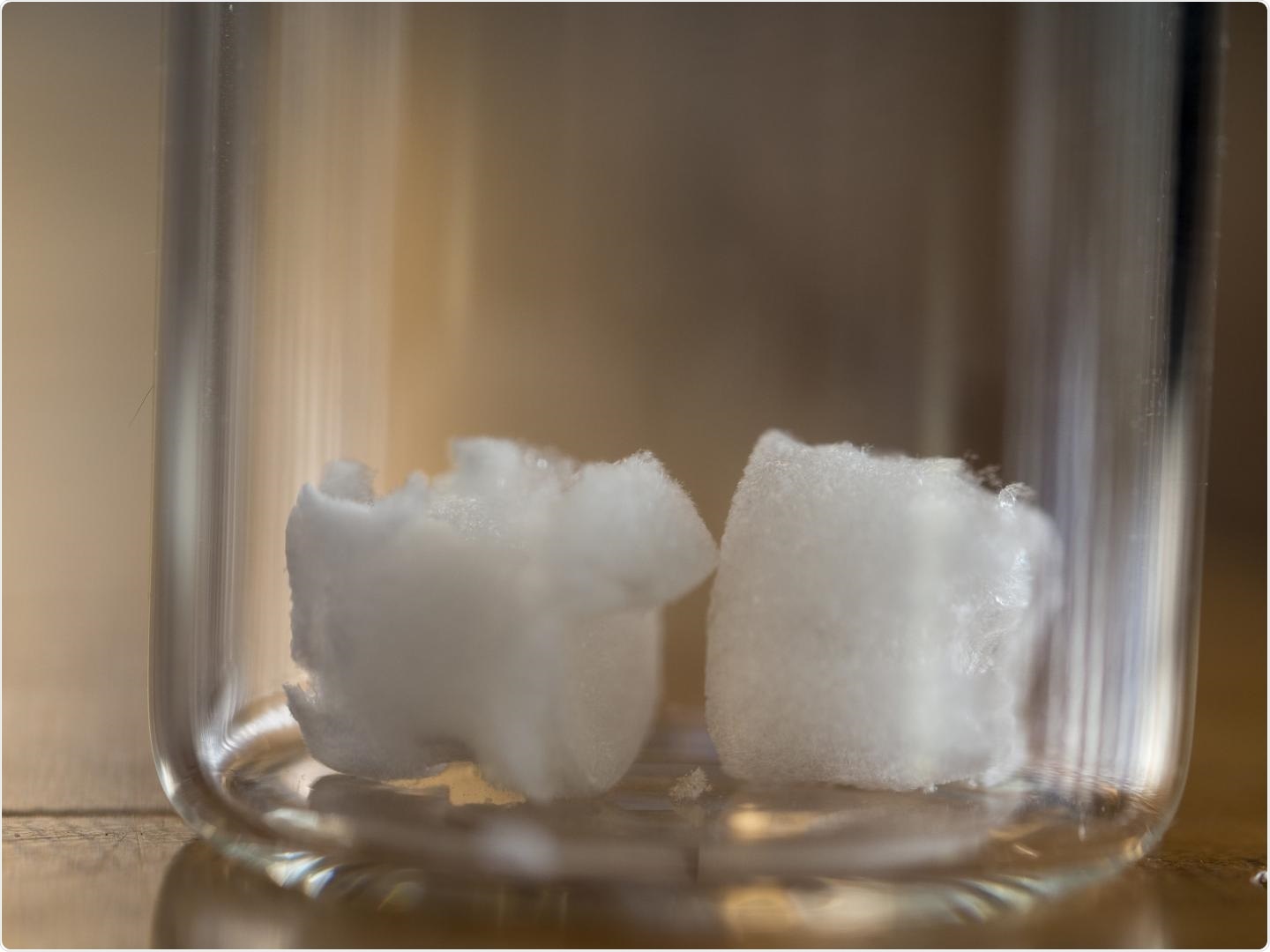Research from the University of British Columbia and McMaster University has led to a new bone implant material made from plant cellulose. The material can be injected into bone cavities to support new growth.

Researchers treated nanocrystals derived from plant cellulose so that they can link up and form a strong but lightweight sponge (an aerogel) that can compress or expand as needed to completely fill out a bone cavity. Clare Kiernan, UBC
The study was published in Acta Biomaterialia on 15th March 2019 and states that “chemically cross-linked cellulose nanocrystal aerogels possess many properties beneficial for bone tissue scaffolding applications. The new material is a foam-like substance that is made by treating nanocrystals derived from plant cellulose, which causes the nanocrystals to link and form a strong aerogel. The resulting aerogel has a spongy consistency and is able to compress or expand to fill bone cavities.
Most bone graft or implants are made of hard, brittle ceramic that doesn’t always conform to the shape of the hole, and those gaps can lead to poor growth of the bone and implant failure.
“We created this cellulose nanocrystal aerogel as a more effective alternative to these synthetic materials.”
Daniel Osorio, chemical engineering PhD student, McMaster University
Cellulose nanocrystals (CNC) were extracted using sulfuric acid or phosphoric acid, and the hydrazone cross-linked aerogels created from the cellulose nanocrystals were analyzed using a combination of microscopy, tomography, and spectroscopy.
Each aerogel was implanted into the calvarian bone of adult male rats, the part of the skull made up of portions of the frontal bone, occipital bone, and the parietal bones in the human skull. Two groups of rats were used for the study, with one group receiving aerogel implants, and the other not being given any implants.
Consequent results showed that the group of rats receiving implants experienced 33 percent more bone growth after three weeks and 50 percent more bone growth by 12 weeks compared to the control group that did not receive implants.
All aerogels were found to demonstrate hydroxyapatite growth over a period of 14 days while submerged in a “simulated body fluid solution”. It was found that sulfated CNC aerogels performed slightly better than the phosphated CNC aerogels in the terms of “compressive strength and long-term stability in liquid environments”.
Co-author of the study Emily Cranston, a professor of wood science and chemical and biological engineering, said:
“These findings show, for the first time in a lab setting, that a cellulose nanocrystal aerogel can support new bone growth.”
Cranston also holds the President’s Excellence Chair in Forest Bio-products at the University of British Columbia. She explained that as the bone begins to heal, the aerogel implant should degrade into non-toxic components in the body.
According to the study, these results showed that cross-linked cellulose nanocrystal aerogels are “flexible, porous and effectively facilitate bone growth” when injected into bone defects.
It is thought that the development of this new material could become a part of the $2 billion bone graft market in North America, according to Kathryn Grandfield, who is a co-author of the study and a professor of materials science and engineering, and biomedical engineering at McMaster University.
“We can see this aerogel being used for a number of applications including dental implants and spinal and joint replacement surgeries.” Grandfield. “And it will be economical because the raw material, the nanocellulose, is already being produced in commercial quantities.”
Further explaining the significance of the study, the researchers state that the new aerogel bound for bone regeneration was “shown to promote the proliferation of bone-like cells and support the growth of hydroxyapatite on their surface in vitro,” and the study “demonstrates the potential” of cellulose nanocrystals for the purpose of bone tissue engineering.
However, it is unlikely that aerogels will be available for use in operating rooms in a short period of time. The next steps will include further testing and investigations, particularly concerning the way in which the implant degrades.
“This summer, we will study the mechanisms between the bone and implant that lead to bone growth,” Grandfield said. “We’ll also look at how the implant degrades using advanced microscopes. After that, more biological testing will be required before it is ready for clinical trials.”